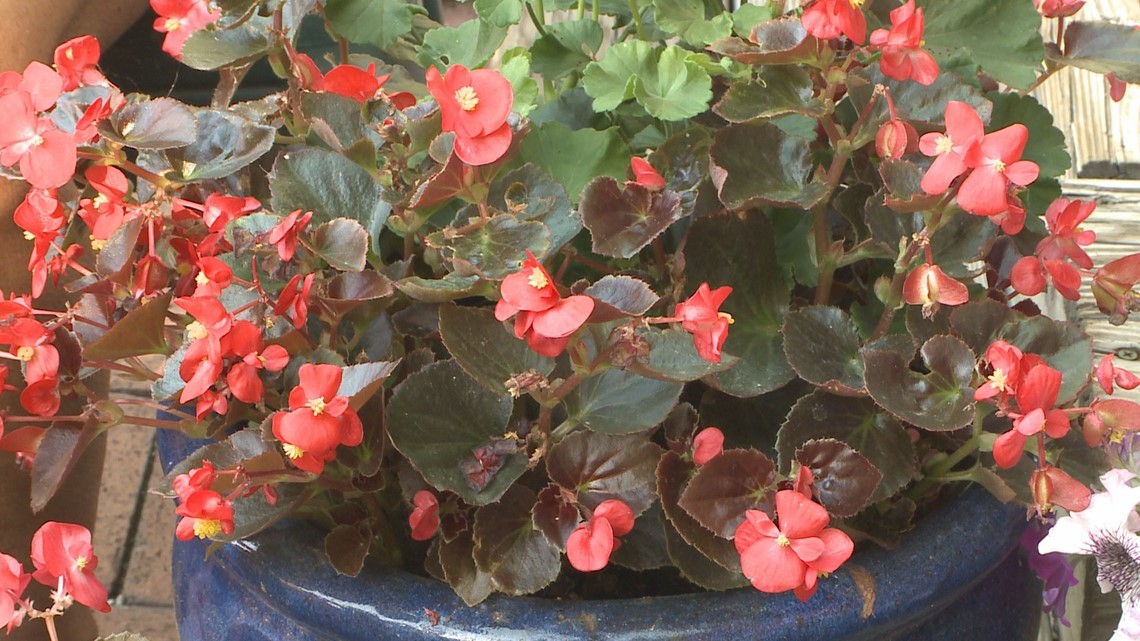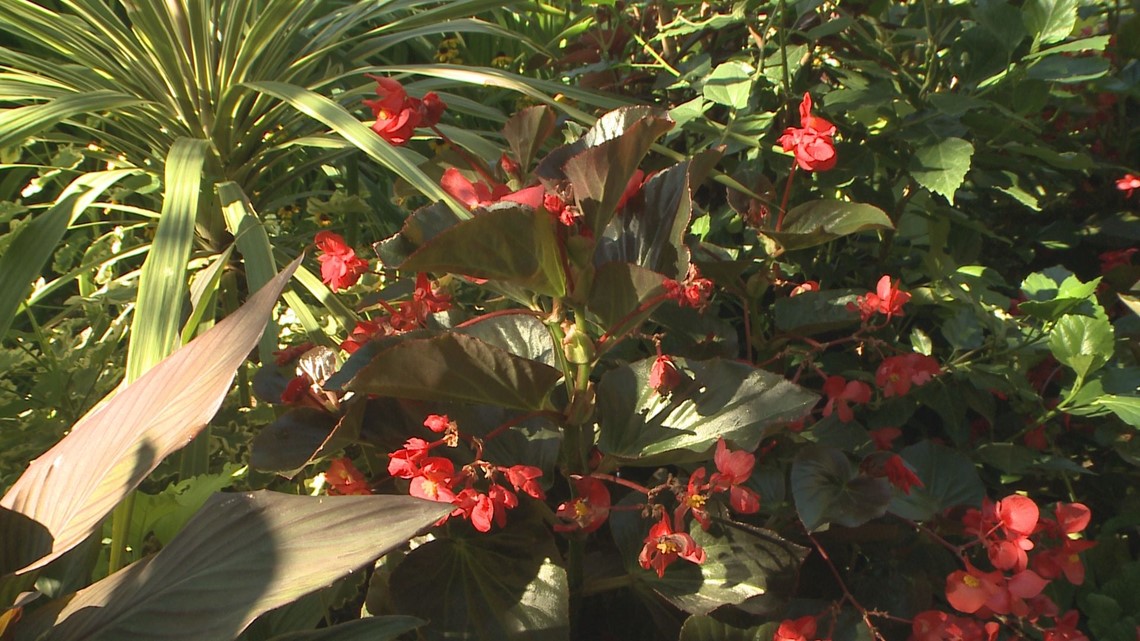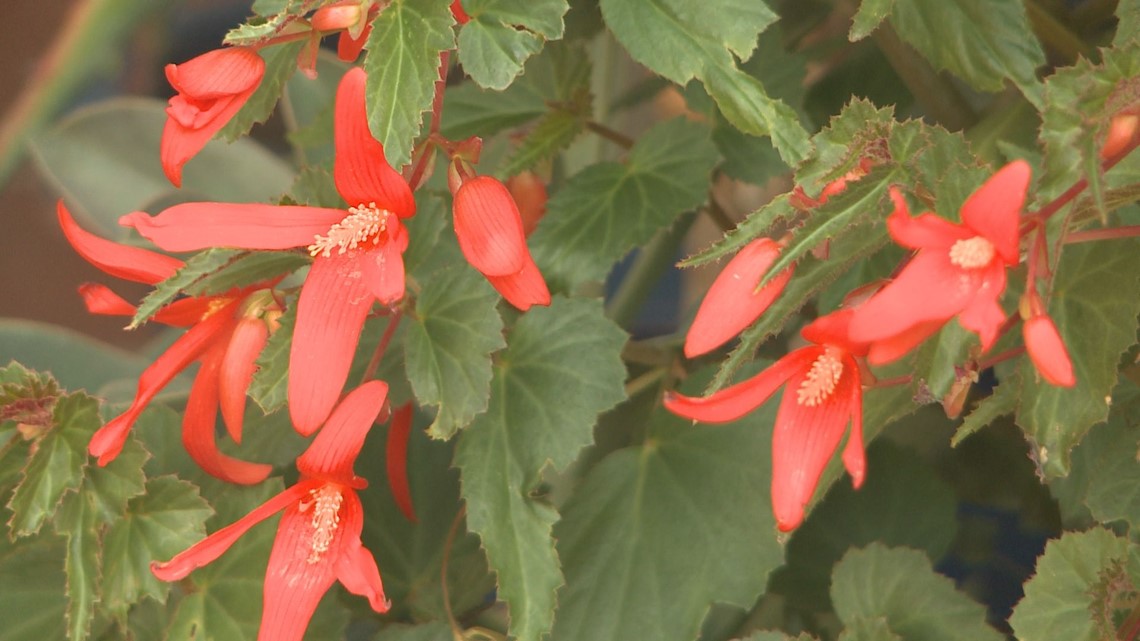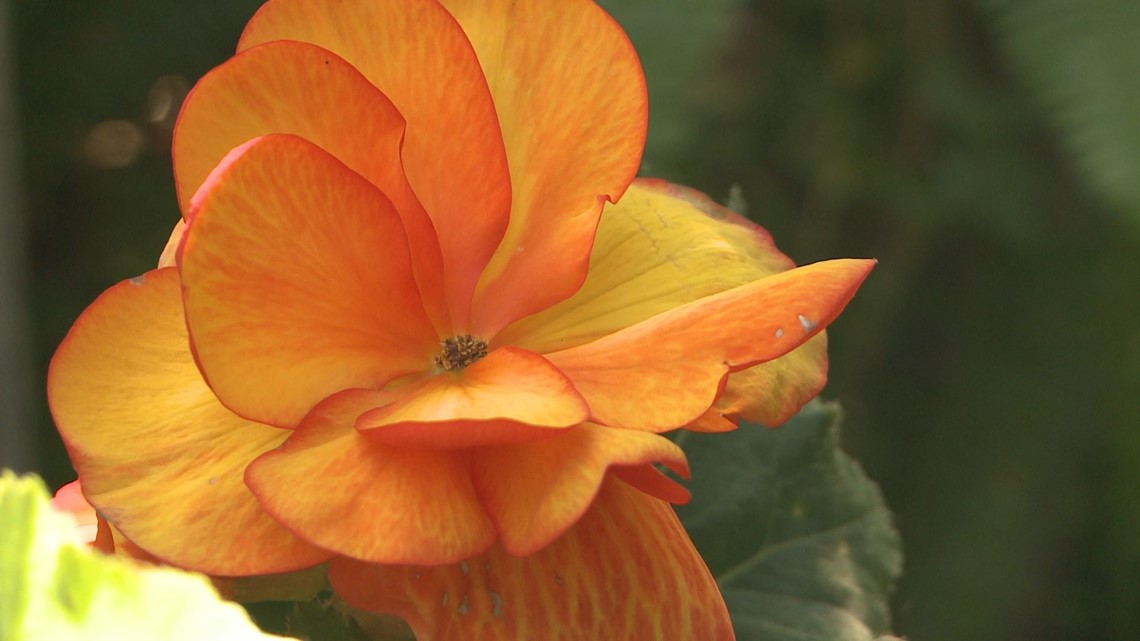DENVER — Begonias don't normally spring to mind as great plants for Colorado gardens - but they are. There are many species and varieties of begonia that thrive in beds or containers. In general, they're easy to grow, have few pests or diseases, and are even somewhat drought tolerant.
Wax begonias are commonly found in rows and designs in public parks. They're compact at about eight inches tall and have thick green or bronze leaves that appear to be made of wax. The flowers may be red, pink, or white. They thrive in sun or part sun and are easy to grow with minimal fuss. I grew the variety 'Bada-Bing' this season and I recommend it for beds or pots.


'Whopper' begonias look like wax begonias on steroids. They can grow well over a foot tall and have shiny green or bronze leaves with red or rose flowers. Also very easy, they'll thrive in full sun to partial shade. They bloom all summer and fall. If taken indoors before frost, they'll bloom all winter in a sunny window. Few plants can claim to flower 365 days a year.


Bolivian begonias are a fairly recent introduction. They have arching stems up to a foot tall with small leaves. The pendant flowers are produced in profusion and may be orange, pink, or white. They can also be grown in sun or shade and can be taken inside in winter.


Angel wing begonias are named for the shape of their leaves. There are several varieties such as red 'Dragon Wing,' yellow-leafed 'Canary Wing' and spotted-leaf 'Torch.' In general, they're best planted in partial shade. The leaves will burn with too much sun. Once again, they can be taken inside in winter.
If you winter begonias indoors, pinch them back periodically and then once again before bringing them back outdoors next spring.


Tuberous begonias are the most spectacular begonias but the trickiest to grow. They're grown from tubers planted in spring. Tuberous begonias grow best in morning sun or filtered sun. The flowers are big and quite pretty. They can be ruffled or frilled in vibrant shades of yellow, orange, pink, red, and white. Tuberous begonias may need staking because the flowers are heavy. They're somewhat drought tolerant and may rot if overwatered. The tubers go dormant in winter. Unlike most other begonias, the tuberous ones take practice to grow well but they're worth it.


More Proctor's Garden:
- How to save water and have a beautiful garden
- These flowers will keep your garden colorful in August
- Proctor's Garden: How to create an English perennial border
- Proctor's Garden: How to care for plants during the dog days of summer
- How to have a colorful xeriscaped garden
- Gardening 101: Follow these easy tips to help your plants thrive
- Indoor and outdoor plants
- How to grow your own salad
- Proctor's Garden: Gradual sun exposure can help your garden thrive
> Top stories curated daily just for you! Sign up for the 9NEWSLETTER to get can’t-miss stories, Next and Broncos content, weather and more delivered right to your inbox.
SUGGESTED VIDEO: Proctor's Garden
MORE WAYS TO GET 9NEWS
Subscribe to our daily 9NEWSLETTER
Download the 9NEWS APP
iTunes: http://on9news.tv/itunes
Google Play: http://on9news.tv/1lWnC5n
HOW TO ADD THE 9NEWS APP TO YOUR STREAMING DEVICE
ROKU: add the channel from the ROKU store or by searching for KUSA.
For both Apple TV and Fire TV, search for "9news" to find the free app to add to your account. Another option for Fire TV is to have the app delivered directly to your Fire TV through Amazon.

